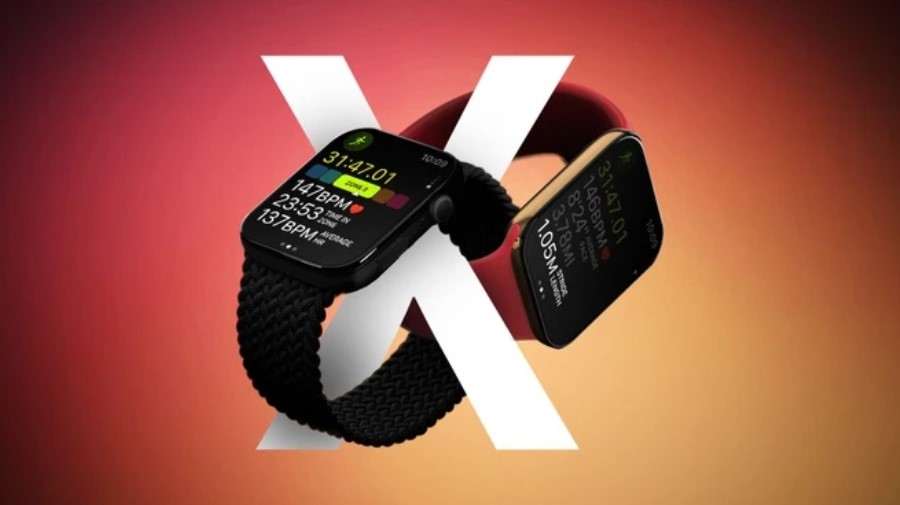iPhone Auto-Brightness Fix Guide
The auto-brightness feature on your iPhone can be a helpful tool, adjusting the screen brightness based on the lighting conditions around you.
Whether you’re in a dimly lit room or out in the sunshine, this feature is meant to ensure your display is easy on your eyes and your battery. However, this handy tool can sometimes have a mind of its own, dimming your display when you least expect it or ramping up the brightness unnecessarily.
If you find yourself frustrated by this, you’re not alone! Thankfully, there are several steps you can take to regain control over your screen brightness. In this guide, we’ll walk you through the various settings and fixes that can help.
Let’s dive into each aspect and explore how you can fix the auto-brightness issue on your iPhone, step by step.
1. Understanding Auto-Brightness and How It Works
.png)
Auto-brightness is a feature that uses the iPhone’s ambient light sensor to adjust the screen’s brightness automatically. The idea is simple: the iPhone will brighten the screen when you’re in a well-lit environment, such as outdoors during the day, and dim the screen when you’re in a darker setting, like a cozy room at night.
While it works well most of the time, there are instances where the auto-brightness feature might misread the environment and lower the brightness more than necessary, making it difficult to read the screen. Conversely, it could also make the screen brighter than needed, which drains your battery unnecessarily.
Luckily, if this feature isn’t behaving the way you want, you can disable it or adjust related settings to bring it under control.
2. Disabling Auto-Brightness: The First Step to Regain Control
The simplest and most effective way to fix issues with auto-brightness is to disable the feature entirely. This will prevent your iPhone from making any automatic adjustments, giving you full control over your display’s brightness.
To disable Auto-Brightness:
- Open the Settings app.
- Scroll down and tap on Accessibility.
- Tap Display & Text Size.
- Scroll down until you see Auto-Brightness.
- Toggle it off.
Once Auto-Brightness is turned off, your iPhone will no longer adjust the screen brightness automatically, and you’ll need to manually set your desired brightness level through the Control Center or the Display & Brightness settings.
3. Disabling True Tone: Another Setting to Adjust
Auto-brightness isn’t the only feature that adjusts the brightness of your iPhone’s display. True Tone is another setting that can subtly alter the screen’s brightness, based on the ambient light around you. Unlike Auto-Brightness, which primarily adjusts brightness levels, True Tone adjusts the color temperature of the display to match the lighting in your surroundings. This can sometimes make the display appear brighter or dimmer than usual.
To disable True Tone:
- Open the Settings app.
- Tap Display & Brightness.
- Toggle off True Tone.
By turning off True Tone, your iPhone will no longer adjust the display’s color or brightness based on ambient lighting. This can prevent unexpected dimming and help you maintain a more consistent screen appearance.
4. Preventing Overheating: A Hidden Cause of Screen Dimming
.png)
Even if you’ve disabled both Auto-Brightness and True Tone, your iPhone may still dim its display in certain situations. One common cause of this is overheating. When your iPhone gets too hot, it will automatically reduce the screen’s brightness to cool down its internal components and prevent potential damage.
To avoid overheating and unintentional dimming, here are a few tips:
- Avoid using your iPhone in direct sunlight for extended periods.
- Limit heavy usage, such as playing graphically intense games or watching high-definition videos, especially when your phone is already warm.
- Remove your phone case if you notice it getting hot during use.
- Ensure your iPhone is running the latest software version, as updates often include performance optimizations.
Maintaining a cooler operating temperature for your iPhone can prevent it from dimming the screen unexpectedly, giving you a smoother and more consistent user experience.
5. Exploring Additional Settings That Influence Brightness
Beyond Auto-Brightness and True Tone, several other iPhone settings can indirectly affect your display’s brightness. Let’s go over some of these settings, so you can adjust them as needed to fix your brightness issues.
Night Shift
Night Shift is a feature that adjusts your display’s color temperature to a warmer tone during the evening or night hours. While its primary purpose is to reduce blue light exposure, it can sometimes create a perception of the screen being dimmer than usual.
To adjust or disable the Night Shift:
- Go to Settings.
- Tap Display & Brightness.
- Select Night Shift.
- You can either schedule it to turn on and off at specific times or disable it entirely.
Reduce White Point (Accessibility Display Accommodations)
The Reduce White Point option in the Accessibility settings reduces the intensity of bright colors on the screen, which can make your display appear dimmer overall. If this is enabled, you might notice that even with the brightness set to maximum, the screen still looks relatively dim.
To check this setting:
- Open Settings.
- Tap Accessibility.
- Select Display & Text Size.
- Scroll down and toggle Reduce White Point off if it’s on.
Magnifier Mode
The Magnifier feature, when enabled, can cause extra brightness on the magnified portion of the screen. This brightness boost might seem inconsistent with the rest of the display.
To disable Magnifier:
- Open Settings.
- Tap Accessibility.
- Select Magnifier and turn it off if you’re not using it.
Low Power Mode
Low Power Mode is a battery-saving feature that can dim your display as part of its effort to conserve energy. If this is turned on, it may explain why your screen seems dimmer than expected.
To check Low Power Mode:
- Go to Settings.
- Select Battery.
- Toggle Low Power Mode off if it’s on.
Display Zoom
The Display Zoom feature changes the size of the icons and text on your screen. While it’s not directly related to brightness, some users report that switching between standard and zoomed display modes can affect the perceived brightness of the screen.
To change this setting:
- Open Settings.
- Tap Display & Brightness.
- Select View under Display Zoom and choose Standard or Zoomed.
6. Battery Health: A Potential Culprit for Dimming
.png)
An often-overlooked factor that could be affecting your iPhone’s brightness is the health of your battery. As batteries degrade over time, they may struggle to deliver sufficient power, causing your iPhone to dim the screen to preserve battery life.
To check your battery health:
- Open Settings.
- Scroll down and tap Battery.
- Tap Battery Health & Charging.
If your battery’s maximum capacity is significantly lower than 100%, it may be time to consider replacing the battery. This can help restore your iPhone’s performance and prevent the device from dimming the screen to save power.
7. Software Bugs and AppleCare: When It’s Time for Professional Help
Sometimes, screen dimming issues can be caused by software bugs or hardware problems that are beyond your control. If you’ve tried all of the above settings and your iPhone is still dimming unexpectedly, it might be worth checking for software updates or reaching out to Apple for assistance.
To check for software updates:
- Open Settings.
- Go to General.
- Tap Software Update.
If there’s a new version of iOS available, updating your device could fix any bugs that might be causing screen dimming issues.
Additionally, if your iPhone is still under warranty or you have AppleCare, it’s a good idea to reach out to Apple Support for help. They can diagnose hardware-related issues or suggest repairs if necessary.
Take Control of Your iPhone’s Brightness
The iPhone’s auto-brightness feature is designed to make your life easier, but it doesn’t always hit the mark. By following the steps above, you can regain control over your screen brightness and stop the frustration of a dimming display.
Start by turning off Auto-Brightness and True Tone, then explore other settings like Night Shift, Reduce White Point, and Low Power Mode that could be affecting your screen brightness. If none of these steps work, check your battery health, ensure your iPhone isn’t overheating, and consider reaching out to Apple for assistance if needed.
With these tips, you can enjoy a more consistent, comfortable iPhone display that works the way you want it to—bright and beautiful when you need it, and dim only when you decide!
LATEST

Last updated: Sep 10, 2024

Last updated: Sep 6, 2024

Last updated: Sep 10, 2024

Last updated: Sep 10, 2024

Last updated: Sep 10, 2024

Last updated: Sep 10, 2024
